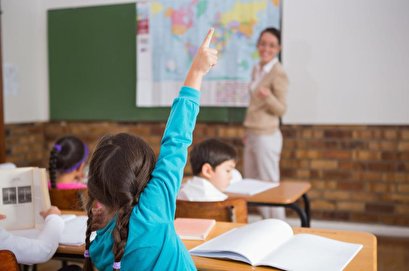TEHRAN, Nov 7_Scientists have figured out the right amount of failure for optimal learning. To acquire new knowledge most efficiently, the latest data suggests one should shoot to fail about 15 percent of the time.
 TEHRAN, Young Journalists Club(YJC)_The latest research, published this week in the journal Nature Communications, suggests students who are getting all the questions right aren't learning anything new.
TEHRAN, Young Journalists Club(YJC)_The latest research, published this week in the journal Nature Communications, suggests students who are getting all the questions right aren't learning anything new.
Educators have long recognized that intellectual growth requires students to be challenged, and that just as perfection promotes stasis, too much failure discourages. Many educators and educational researchers surmised that there was a "sweet spot" for learning.
For the latest study, researchers set out to find the right amount of failure for optimal learning -- the sweet spot.
"These ideas that were out there in the education field -- that there is this 'zone of proximal difficulty,' in which you ought to be maximizing your learning -- we've put that on a mathematical footing," study author Robert Wilson, an assistant professor of psychology and cognitive science at the University of Arizona, said in a news release.
To hone in on the learning sweet spot, scientists taught a machine learning algorithm to perform a variety of simple tasks, like determine hand written numbers as odd or even and classify patterns into one of two categories.
The computers learned fastest when the number images and patterns were difficult enough to trick the computers 15 percent of the time.
"If you have an error rate of 15 percent or accuracy of 85 percent, you are always maximizing your rate of learning in these two-choice tasks," Wilson said.
Wilson and his research partners surveyed previous animal learning studies and found evidence that animals learn fastest when they're failing around 15 percent of the time.
The researchers estimate the same sweet spot applies to perceptual learning in humans, like a radiologist trying to learn the differences between tumors and non-tumors.
"You get better at figuring out there's a tumor in an image over time, and you need experience and you need examples to get better," Wilson said. "I can imagine giving easy examples and giving difficult examples and giving intermediate examples."
"If I give really easy examples, you get 100 percent right all the time and there's nothing left to learn," Wilson said. "If I give really hard examples, you'll be 50 percent correct and still not learning anything new, whereas if I give you something in between, you can be at this sweet spot where you are getting the most information from each particular example."
Wilson hopes teachers will use the study as a template for how much to challenge their students, and that students will use the latest findings to get the most out of their education.
"If you are taking classes that are too easy and acing them all the time, then you probably aren't getting as much out of a class as someone who's struggling but managing to keep up," he said. "The hope is we can expand this work and start to talk about more complicated forms of learning."
Scientists have previously found evidence that adults can benefit from failure, too. One study showed scientists who fail to earn grant funding for their initial research, but persevere and eventually succeed, end up outperforming their early-succeeding peers in the long run.
Source :UPI
 TEHRAN,
TEHRAN,